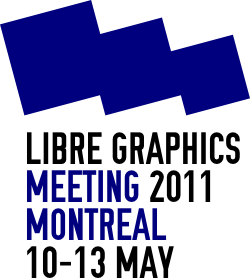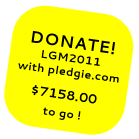Day 1
Tuesday May 10, 2010
09:30
Making color management “just work” using colord
Richard Hughes
http://www.hughsie.com
Video
The colord project intends to make color management just work. In this presentation I will quickly introduce why color management is required, and also the problems introducing an integrated color management workflow. We will compare and contrast the frameworks commonly used in OSX and Windows 7. By discussing the integration points, we will be talking to application developers and platform maintainers in order to shape the future development of colord and the front-ends such as GNOME Color Manager. We will also spend some time exploring the intricacies of an open source color management framework best suitable for display, scanning and printing, and how we can start to provide this functionality. I’ll cover how key projects have already been modified to work with colord, and what application authors still have to do.
There will be time left for questions and discussion. It is expected the audience will be moderately technically skilled, and possess a basic understanding of color management.
10:00
Connecting Device Calibration to ICC Profiles
Kai-Uwe Behrmann
http://www.oyranos.org
Video
Moving the drivers colour slider and forget is a worst case scenario for ICC colour management. The talk gives some ideas on, how to preserve the relation of the original colour device calibration with the resulting ICC colour profile. Possible strategies will be discussed using PPD files and the ICC meta tag. Basic terms will be explained.
10:30
Plain Text: Graphic Design and Programming Culture
Eric Schrijver
http://ericschrijver.nl/
Video
As Douglas Rushkoff explains in Program or be Programmed, programming is a new literacy that ought to be mastered if you care about taking a part in directing our culture.
To those who already program, it can sometimes seem odd that the number of people learning this vital skill is so small: after all, basic programming is not very hard. The catch is, programming as a skill is deeply embedded in a larger ecosystem, referred to as programming culture. To learn how to program is not just to learn how loops and variables work, but also how to navigate this culture.
Like any culture there are biases in programming culture, and these can make learning how to program more difficult than strictly necessary. As a designer, there are certain biases that are especially remarkable. One of them is the way how text-based interfaces are in favour:
Whereas everyone else is traipsing around picking dazzling fonts to describe their world, your nerd has carefully selected a monospace typeface, which he avidly uses to manipulate the world deftly via a command line interface while the rest fumble around with a mouse. ( http://www.randsinrepose.com/archives/2007/11/11/the_nerd_handbook.html )
This talk will highlight a number of ways in which the text-oriented view of traditional programming clashes with the visually oriented way of thinking of designers. It shows how text based thinking can enhance a design process, but also goes into how a bias towards text-based approaches can stifle the development process of software, and make programming less accesible to new audiences. It shares lessons learned from the process of learning to code as a designer, and subsequently teaching code to design students. It concludes with how developments in Libre Graphics software can mitigate between these two paradigms.”
14:00
Krita: Professional Digital Painting
Lukáš Tvrdý
http://lukast.mediablog.sk/log
Video
Krita is a KDE program for sketching and painting, offering an end–to–end solution for creating digital painting files from scratch by masters. Fields of painting that Krita explicitly supports are concept art, creation of comics and textures for rendering.Krita supports creative working by getting out of the way and with snappy response.
Krita 2.3 is the first Krita release advertised as user-ready. We work hard, in close connection to artists, to make Krita the best painting application. This talk will be about the road to Krita usable for professional artists. I will guide you fastly through new nifty features in Krita like color choosers, brushes, new tools, the canvas and more. I will emphasis what the Krita artists like the most about Krita and also what do we plan for the future releases. I will share some “”behind the scene”" stories from the development, how we work, how we co-operate with other libre graphics applications and what we have achieved so far.
14:30
Using Blender for Patent Absurdity / advocacy animations
Christopher Allan Webber
http://dustycloud.org
Video
Blender was used in the film Patent Absurdity to produce several animations. I will describe how those animations were made and talk about how Blender could be used for further free software / culture advocacy animation work.
15:00
Libre Graphics magazine: A year of fantastic
Ana Carvalho
,
ginger coons
,
Ricardo Lafuente
http://libregraphicsmag.com
Video
This talk introduces and charts the first year of Libre Graphics magazine, a publication intended to give voice to the libre graphics user community. It explores the motivations of the publication and its editorial team. It further highlights the trials and triumphs encountered in the first year of the production and development of the magazine. Libre Graphics magazine is published using a fully F/LOSS workflow, building in such libre graphics staples as Inkscape, GIMP, Scribus and others. The talk will also go into some depth on the issue of creating a uniquely F/LOSS magazine design workflow (using the above-mentioned tools, as well as those more traditionally targeted towards developers, like version control and various command line tricks).”,”Ana Carvalho, ginger “”all-lower-cas
15:15
Comic book drawing with Krita
Timothée Giet
http://animtim.wehost.be/blog
Video
I want to make a workshop centered around drawing comics with Krita, including live demo and feature talking.
For the last 6 month I’ve been testing Krita to evaluate it seriously as a comic-book artist tool, giving feedback to the development team. To achieve this I’ve worked on a little experimental comics called “”Wasted Mutants”" (you can read it on my blog).
So I want to make some live demonstration, highlighting the feature I’ve found useful for this task, some new upcoming/still in test exciting features, and maybe what is still missing or could be improved in the future to get it perfect.
15:30
Future Tools: The Libre Graphics Research Unit
Femke Snelting
http://ospublish.constantvzw.org/lab
Video
The Libre Graphics Research Unit will be a traveling lab where new ideas for creative tools can be developed. Its diverse activities range from the practical to the theoretical via writing, research meetings, experimental prototyping, a conference and a workshop. The Research Unit is an initiative of four European media-labs actively engaged in Free/Libre and Open Source Software and Free Culture. This cross-disciplinary project involves artists, designers and programmers and we would like to develop the work in dialogue with the Libre Graphics community. What future practices can we imagine, and which tools can make them happen?
The Libre Graphics Research Unit is a collaboration involving Medialab Prado (Madrid, ES), WORM (Rotterdam, NL), Piksel (Bergen, NO) and Constant (Brussels, BE). It will run for two years as of June 2011 with the support of the EU Culture Programme 2007-2013.
15.40
Revivalism: open font conversion and other great awakenings
Nathan Willis
http://www.glyphography.com/fonts
Video
This talk is an account of my project over the last few months to design an open source revival of the 1908 News Gothic font, including an outsider/newcomer’s perspective on the free font design toolchain, but with feedback on related tools as well, particularly scanning and vectorizing samples of the original typeface, and extending the original, Latin-only designs into additional orthographies. Reviving public domain works is not limited to fonts, of course, so there are potential lessons for other areas of design as well.
15:45
VEGESIGNES
Leaurend Lavie Hyp-Père (Laval) Chabon
http://www.lavalchabon.com
One day, you will all have to sign your name once down, even if it is just for an invoice proof. The correspondences between VEGESIGNES Font and all the curves and waveforms shown (as seen with) in an oscilloscope like a cardiac monitor and/or any audio software available the worldwidest will show you how to sign your name better. Verifying one thing: virtuel? Or virtual? Response: In our French way the word vir-(e) means to make a U turn. 31 seconds at your watch. In second, the word -el(le) means a question about it: this one or an other else?… Do you understand? In your English way, the word -al(l) means «for all.» So if you all accept to turn all the similar letters t or characters t downstanding upon their foot, you will be making the first step to access VEGESIGNES way of writing (down, as you say) and reading on. thus, you have no English definition for the beginning stem of this word, virtual. You have: the turn. So we don’t use the «turn» in saying i.e. «this is a turnual software». Do you know? And when you write or say «a turn-i-t-y» are you still not turning it down? the same for «uni-vers-i-t-y». In French, our way, «vers(e)»- term is to make a U turn too. An unconditional turn of the t. I will show you for the others letters in my VEGESIGNES Lightning talk.
17:00
Unleashing the Power of Inkscape to Create and Share
Brad Phillips
http://fabricatorz.com
Video
While Inkscape remains a leading tool in the Libre Graphics Community, lack of exposure in comparison to other proprietary tools presents a key issue in it’s progression into mainstream tech consciousness. In my presentation, I will go through the process of creating a custom vector avatar in Inkscape. This process will provide an overview of the tools available to graphic artists and how to use them in a way that produces professional results.
To wrap up the presentation, I’ll upload the finished avatar to The Open Clip Art Library, the primary destination for freely usable created content. I’ll also expose the ways in which attendees can become a part of the Community and help it grow.





















Follow Us